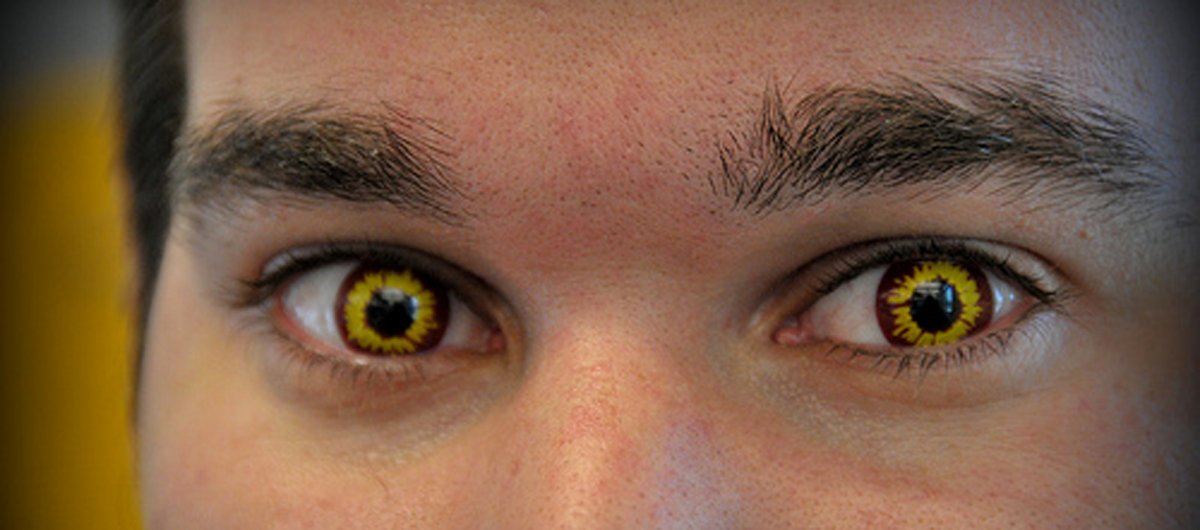Table of Contents
Sooner or later, Halloween spirit is bound to get rub off on you. You know the drill. Everyone tries his or her best to outdo others in an epic bid to look different and spectacular. To assemble the perfect Halloween costome, you get outlandish clothes, wear the most ghoulish makeup and even try to change the look of your eyes by using decorative non-corrective contact lenses. But ophthalmologists warn that these decorative contact lenses, when used without a prescription, can cause irreversible damage to your eyesight.

Although you always have to be careful about your eye safety (your eyes don't grow back, after all), it is during Halloween that an overwhelming influx of patients come to emergency departments everywhere with an eye injury. Every year around Halloween, the FDA issues guidelines for eye safety. But people tend to ignore them and compromise the safety of their eyes, perhaps thinking that these horror stories will never affect them personally.
Those spooky contact lenses are for sale on Amazon or at your local costume shop, you think, so they must be safe, right? Actually, no. Not necessarily, and especially if you don't know how to use contact lenses because you don't usually wear them.
FDA warns public to avoid using decorative contact lenses
The FDA has joined hands with ophthalmologists from various professional associations, including the American Academy of Ophthalmology, the American Association for Pediatric Ophthalmology and Strabismus, the Contact Lens Association of Ophthalmologists and the American Optometric Association, to impress upon the public the burning need to avoid using decorative contact lenses.
Decorative contact lenses are also called by the names of fashion contact lenses, color contact lenses, Plano, zero powered or non-corrective contact lenses. They are used to change the color of the eye or to give the eye a weird look. Novelty contact lenses can make the eyes glow in dark or create an illusion of vertical eyes. It is because of this reason that these lenses sell like hot cakes around Halloween. You can easily get them from street vendors, salons, boutiques, flea markets, novelty stores, convenience stores, record and video stores, beach shops, and stores specializing in Halloween goods. These lenses can also be bought through internet. These lenses can be bought for as little as $20.
But the FDA warns that decorative contact lenses should never be bought from the aforementioned places. The sale of decorative contact lenses is governed by federal laws. They have been classified as prescription or medical devices and their sale is regulated by the FDA. They cannot be sold as over-the-counter merchandise.
The FDA states that it is mandatory for any person wishing to buy a pair of decorative contact lens to consult an ophthalmologist before. The doctor would examine the eyes of the person and then prescribe the lenses according to the person’s need. It is a misconception that contact lenses come in a single fit for all sizes and hence there is no need to involve a doctor. Your ophthalmologist would measure the size of your cornea as well as the curvature, and then prescribe lenses which are a perfect fit for your eye.
- Decorative Contact Lenses, by U.S. Food and Drug Administration, last updated on October 10, 2012, accessed on October 21, 2012.
- “'Lucky 13' Tips for a Safe Halloween”, by U.S. Food and Drug Administration, last updated on October 19, 2011, accessed on October 21, 2012.
- “FDA Reminds Consumers of Serious Risks of Using Decorative Contact Lenses without Consulting Eye Care Professional”, by U.S. Food and Drug Administration, published on October 27, 2006, accessed on October 21, 2012.
- Photo courtesy of ArunKamaraj on Flickr: www.flickr.com/photos/arunkamaraj/3006035899/
- Photo courtesy of drburtoni on Flickr: www.flickr.com/photos/84346589@N00/1888897667/

